For project 4, our final project of the semester, I chose to use a macro, minimalist approach. Some of my photographs border on abstract, and all contain texture. Texture has become a large portion of much of my art work outside of photography like paintings and drawings. By using light and shadow, the textures and details of the images come alive.
Here are my eight photographs for this project-
This blog documents my beginning photography class projects of Fall 2011... and beyond.
Tuesday, December 4, 2012
David Hilliard Lecture
I attended the David Hilliard lecture, Photographs, Past and Present on November 15th. David Hilliard received his BFA at The Massachusetts College of Art and his MFA at Yale. He has taught at The Massachusetts College of Art and various other colleges.
Hilliard's work consists of large panoramic photographs usually created in two to five separate photographs without merging the scenes together. Hilliard creates narratives within his photographs with friends and family that are open-ended. The viewer does not necessarily know what is happening in each set of images, but the photographs are beautifully crafted with beautiful light- mostly natural.
Hilliard's photographs depicting nature are my favorite images, but some of his inside work using natural light entering the space through a window are equally breathtaking. I like the fact that his images create vague narratives that leave the meaning to the interpretation of the viewer.
These are some of my favorite David Hilliard images:



Hilliard's work consists of large panoramic photographs usually created in two to five separate photographs without merging the scenes together. Hilliard creates narratives within his photographs with friends and family that are open-ended. The viewer does not necessarily know what is happening in each set of images, but the photographs are beautifully crafted with beautiful light- mostly natural.
Hilliard's photographs depicting nature are my favorite images, but some of his inside work using natural light entering the space through a window are equally breathtaking. I like the fact that his images create vague narratives that leave the meaning to the interpretation of the viewer.
These are some of my favorite David Hilliard images:




Saturday, November 17, 2012
Project 4- This Is Just to Say...
For project four, we are to create our own poem parody to William Carlos Williams poem, "This is Just to Say".
This Is Just to Say...
I have ended
My life
That was so
Painful
And which
You were always
Trying
To save
Forgive me
It's not your fault
Release me
You are free
This Is Just to Say...
I have ended
My life
That was so
Painful
And which
You were always
Trying
To save
Forgive me
It's not your fault
Release me
You are free
Friday, November 2, 2012
Art History Lecture with Professor Melissa Hyde
Women Artists of the 1700's
In the 1700's, women were not considered artists. This title was only given to men. The women who did dabble in the arts were considered paintresses which meant they were crafters, a term that was demeaning to women who were actually as good or better than many of the men artists. When a woman's work was compared to a male artist's work, it was always considered inferior. Many women used pastels instead of oil paints that men used, which also made their work seem inferior to the more permanent oil paintings. Pastels were considered a feminine material and were even made out of many of the same substances used for their cosmetics.If a woman married, which of course was considered proper, her art hobby many times disappeared as her duties as a wife and mother were more important. Not only were they supposed to start a family to carry on the family name, but their husbands also controlled the finances. A wife's behavior reflected upon the husband, so it was his duty to control his wife. This caused many women with art careers to wait until later in life to marry. Louise Elisabeth Vigee Le Brun of France married Jean-Baptiste-Pierre Le Brun out of convenience. He was both an artist and art dealer with connections to sell her paintings. Adelaide Labille-Guiard was married after the age of twenty, but became legally separated a few years later, after the French Revolution allowed for separations of married couples. Labille-Guiard did not marry again until after the age of fifty when she married a fellow artist. She then was considered a student of her husband even though she had been painting all her life.
I found this lecture informative and interesting. While I realized that women of earlier times had difficulties establishing themselves as anything more than a wife and mother, I had not thought of what that would mean in terms of the hardships and degradation they encountered if they dared practiced art. Today we know women and men are equal but double standards and inequalities still exist. The women of past generations who continued to practice art even in times of adversity paved the way for women artists today.
Thursday, November 1, 2012
Terry Evans
I found the work of Terry Evans through an article in The Huffington Post online. Her work resonates with me, as I love nature photography. Some of my favorites are below. To see more of her work, go to www.terryevansphotography.com








Project 3- Painting Emulation
For this project I plan to emulate the paintings of Dorothea Tanning, a surrealist painter with a very large body of work to choose from. Here are the works I plan to use:
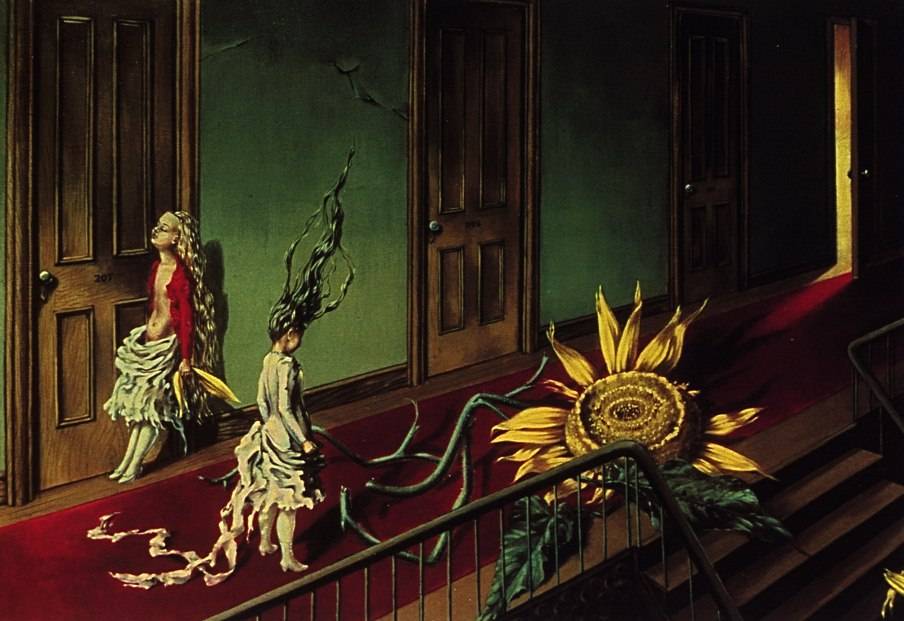 Ein klein nachtmusik
Ein klein nachtmusik
1946; "A little night music"

Voltage, 1942

Portrait de famille (Family Portrait), 1954
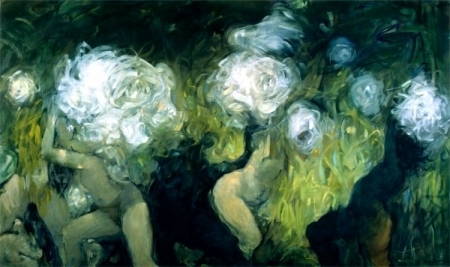
On Avalon, 1987
 Ein klein nachtmusik
Ein klein nachtmusik
1946; "A little night music"

Voltage, 1942

Portrait de famille (Family Portrait), 1954

On Avalon, 1987
 |
Dimanche après-midi (Sunday Afternoon), 1953 |
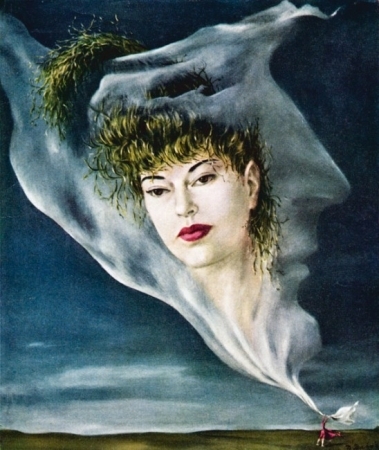 |
| Portrait of Muriel Levy, 1944 |
Wednesday, October 17, 2012
Project Two- Surreal Dreamscapes
I'm actually quite pleased with this project. Even printed 14x22 the images look pretty good. I really enjoy compositing images to create my own worlds. I'm improving my Photoshop techniques which is helping tremendously!
Wednesday, September 26, 2012
Susan Sontag Reading Response
The invention of the photograph in 1839 has changed the way we see the world. Unlike a painting or a drawing, a photograph can be an accurate way to represent what we see and how we see it, or a photograph can be manipulated to look nothing like the original object. The treasures of our world have become accessible to nearly all people just by viewing a representation of the object in a small photograph.
Photographs are versatile and can be set in many different formats such as books, and newspapers, or just as reprinted images. In such settings, the pictures can be paired with text to tell a story. Pictures have become irreplaceable in society to identify citizens and increase safety. The use of a photograph in a realistic manner can prove the existence of an experience or happening.
A picture of an object used to be considered proof of the object's existence, but it seems that our culture now must question the truthfulness of a photograph. As Sontag wrote, "The picture may distort; but there is always a presumption that something exists, or did exist, which is like what's in the picture." Now, Photoshop and other ways of manipulating the truth has become so realistic that tat times it is difficult to decipher truth from fiction.
In photographing objects, the photographer takes on a God-like quality by recreating the world as we want others to see it. Even the most realistic photography is subject to the ideas of the photographer. For each shot, the photographer decides how the picture should look through framing, exposure, and subject which show the photograph can be thought of as any other form of art; as the photographer's interpretation of the world. The viewer then interprets the photograph, bringing his or her own experiences into play in the interpretation.
The invention of photography has opened up new ways of seeing and interpreting our world. Whether realistic or manipulated, photographs enhance our lives by recording experiences and places that would be left to memory or an artist's rendering. However, photographs are still subject to the photographer's intentions and the individual viewer's interpretations drawn from personal experiences.
Photographs are versatile and can be set in many different formats such as books, and newspapers, or just as reprinted images. In such settings, the pictures can be paired with text to tell a story. Pictures have become irreplaceable in society to identify citizens and increase safety. The use of a photograph in a realistic manner can prove the existence of an experience or happening.
A picture of an object used to be considered proof of the object's existence, but it seems that our culture now must question the truthfulness of a photograph. As Sontag wrote, "The picture may distort; but there is always a presumption that something exists, or did exist, which is like what's in the picture." Now, Photoshop and other ways of manipulating the truth has become so realistic that tat times it is difficult to decipher truth from fiction.
In photographing objects, the photographer takes on a God-like quality by recreating the world as we want others to see it. Even the most realistic photography is subject to the ideas of the photographer. For each shot, the photographer decides how the picture should look through framing, exposure, and subject which show the photograph can be thought of as any other form of art; as the photographer's interpretation of the world. The viewer then interprets the photograph, bringing his or her own experiences into play in the interpretation.
The invention of photography has opened up new ways of seeing and interpreting our world. Whether realistic or manipulated, photographs enhance our lives by recording experiences and places that would be left to memory or an artist's rendering. However, photographs are still subject to the photographer's intentions and the individual viewer's interpretations drawn from personal experiences.
Tuesday, September 25, 2012
Inspiration for Death, Dreams, and Desires Project
 |
| "Enamorado de la Luna" Luis Beltran |
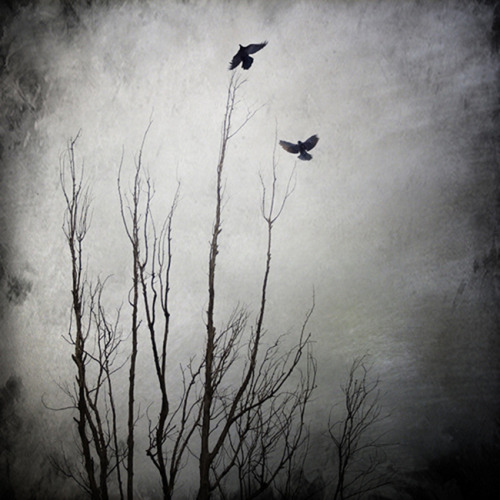 |
| "Mirlos" Luis Beltran |
 | |||||||||||||||||||||
| "Mariposa de Otono" Luis Beltran My ideas for Project 2, Death, Dreams, and Desires, are leaning towards Surreal Dreamscapes produced by compositing images together. I would like the backgrounds of the photo to be equally important as the subject by creating interesting colors and textures found in paintings. I plan to use my youngest daughter in some of the photographs as well as interesting or strange objects into the compositions. Another possibility for this project is using a Holga or some other type of cheap camera with black and white film to just wing it and see what I can produce. Happy accidents hopefully! Good thing I have a back up plan. |
Monday, September 24, 2012
Wednesday, September 19, 2012
Alter Ego Fall 2012
 |
| Cindy Sherman- Untitled |
When I think of alter ego, I think of Cindy Sherman. I find her work inspiring, as I have never actually photographed myself. This is not an idea I am fond of. Cindy makes her photographs look effortless.
Another artist known for alter ego photography is Yashimura Morimura who inserts himself into famous works of art.
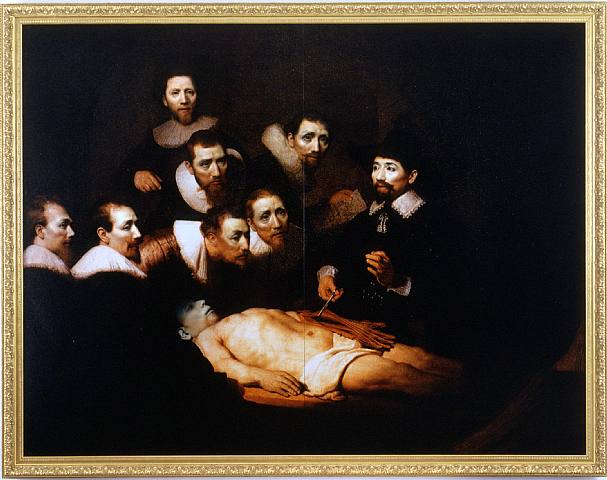 | ||
| Yashimura Morimura- Portrait (Nine Faces) |
Subscribe to:
Posts (Atom)































